Birth flowers offer a beautiful and meaningful way to celebrate each month of the year. Just like birthstones, every month has its own unique flowers that symbolize distinct qualities and traits. These blooms carry deep-rooted meanings, from love and friendship to strength and loyalty, making them a special way to honor birthdays or other important milestones. Interestingly, some months have two birth flowers, offering even more variety and significance. Whether you’re curious about your own birth flower or looking for the perfect floral gift for someone special, understanding the meaning behind each bloom adds a personal touch. In this article, we explore all 24 birth flowers—two for each month—and dive into their rich symbolism, cultural significance, and timeless appeal. Discover how these blooms reflect the unique qualities of the months they represent and the deeper connections they can foster.
January – Carnation (Dianthus caryophyllus)
| Attribute | Details |
|---|---|
| Common Name | Carnation |
| Scientific Name | Dianthus caryophyllus |
| Family | Caryophyllaceae |
| Origin | Native to the Mediterranean region |
| Flower Color | Typically pink, white, red, yellow, purple |
| Plant Type | Perennial herbaceous plant |
| Height | 20–80 cm (8–31 inches) |
| Flowering Period | Spring to summer (depending on climate and cultivation) |
| Sunlight Requirements | Full sun to partial shade |
| Soil Type | Well-drained, sandy or loamy soil |
| Soil pH | Neutral to slightly alkaline (pH 6.5–7.5) |
| Watering Needs | Moderate watering; prefers slightly dry soil |
| Propagation Methods | Seeds, cuttings, or division |
| Uses | Ornamental, cut flowers, perfumes, essential oils |
| Symbolism | Love, fascination, distinction; used in various cultural ceremonies |
| Pests/Diseases | Susceptible to aphids, thrips, fungal diseases (e.g., rust) |
| Toxicity | Mildly toxic to pets if ingested |
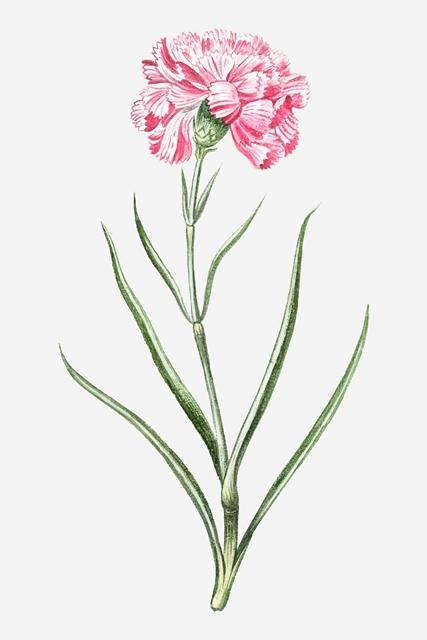
Snowdrop
The delicate snowdrop blooms in the heart of winter, often peeking through the snow. This fragile-looking flower represents hope, rebirth, and optimism, making it a perfect complement to the cold month of January.
February – Violet (Viola odorata)
February’s birth flower, the Violet, is a symbol of faithfulness, humility, and spiritual wisdom. These delicate purple blooms, often hidden beneath larger plants, reflect the quiet strength and loyalty that those born in this month often exhibit.
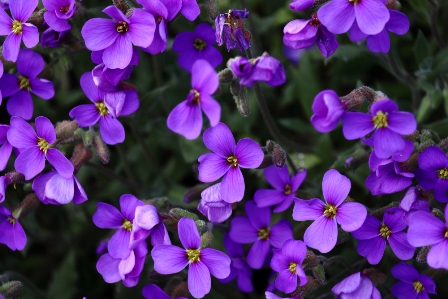
| Attribute | Details |
|---|---|
| Common Name | Violet, Sweet Violet |
| Scientific Name | Viola odorata |
| Family | Violaceae |
| Origin | Europe and Asia |
| Flower Color | Violet, purple, white |
| Plant Type | Perennial herbaceous plant |
| Height | 10–15 cm (4–6 inches) |
| Flowering Period | Early spring to late spring |
| Sunlight Requirements | Partial shade to full shade |
| Soil Type | Moist, well-drained soil |
| Soil pH | Slightly acidic to neutral (pH 6.0–7.0) |
| Watering Needs | Moderate watering; prefers consistently moist soil |
| Propagation Methods | Seeds, division, runners |
| Uses | Ornamental, perfumes, medicinal purposes |
| Fragrance | Strong, sweet fragrance |
| Symbolism | Modesty, humility, love, faithfulness |
| Pests/Diseases | Susceptible to slugs, snails, and fungal infections (e.g., mildew) |
| Toxicity | Generally non-toxic to humans and pets |
Primrose
A symbol of youth and new beginnings, the primrose brings brightness to February. This flower’s name, meaning “first rose,” signifies the renewal of life and innocence, making it a perfect herald of spring.
March – Daffodil (Narcissus pseudonarcissus)
Daffodils, with their bright yellow petals, signal the arrival of spring. As the birth flower for March, daffodils symbolize new beginnings, hope, and rebirth.

| Attribute | Details |
|---|---|
| Common Name | Daffodil, Wild Daffodil, Lent Lily |
| Scientific Name | Narcissus pseudonarcissus |
| Family | Amaryllidaceae |
| Origin | Native to Western Europe (particularly Spain, Portugal, and the UK) |
| Flower Color | Typically yellow, but also white or pale orange |
| Plant Type | Perennial bulbous plant |
| Height | 30–50 cm (12–20 inches) |
| Flowering Period | Early to mid-spring |
| Sunlight Requirements | Full sun to partial shade |
| Soil Type | Well-drained, fertile, and loamy soil |
| Soil pH | Slightly acidic to neutral (pH 6.0–7.0) |
| Watering Needs | Moderate watering; prefers moist soil during growth |
| Propagation Methods | Bulb division |
| Uses | Ornamental, cut flowers, naturalized in gardens |
| Symbolism | Renewal, rebirth, new beginnings; associated with spring |
| Pests/Diseases | Susceptible to bulb rot, narcissus fly, slugs, and fungal diseases |
| Toxicity | Toxic to humans and pets if ingested (can cause nausea, vomiting) |
Jonquil
Often mistaken for daffodils, jonquils are actually a variety of the Narcissus family. They share the daffodil’s symbolism of rebirth but are also associated with affection and desire, representing a deeper emotional connection.
April – Daisy (Bellis perennis)
The Daisy, representing innocence, purity, and new beginnings, is April’s birth flower. The simple yet elegant structure of a daisy reflects a natural beauty that speaks to the freshness of spring.
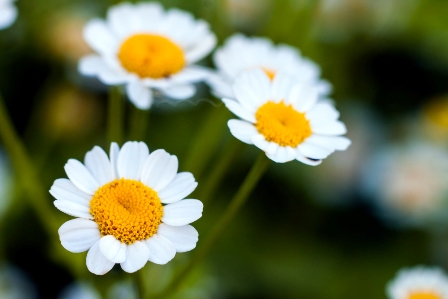
| Attribute | Details |
|---|---|
| Common Name | Daisy, Common Daisy, Lawn Daisy |
| Scientific Name | Bellis perennis |
| Family | Asteraceae |
| Origin | Europe and temperate regions of Asia |
| Flower Color | White petals with yellow center, sometimes pink-tinged |
| Plant Type | Perennial herbaceous plant |
| Height | 2–20 cm (1–8 inches) |
| Flowering Period | Early spring to autumn |
| Sunlight Requirements | Full sun to partial shade |
| Soil Type | Well-drained, moderately fertile soil |
| Soil pH | Neutral to slightly acidic (pH 6.0–7.0) |
| Watering Needs | Moderate watering; prefers moist but not waterlogged soil |
| Propagation Methods | Seeds, division |
| Uses | Ornamental, traditional medicine, edible flowers (salads, garnishes) |
| Symbolism | Innocence, purity, new beginnings |
| Pests/Diseases | Susceptible to aphids, slugs, mildew, and rust |
| Toxicity | Generally non-toxic to humans and pets |
Sweet Pea
The sweet pea symbolizes blissful pleasure and gratitude. It’s often associated with departures and goodbyes, but in a way that highlights the beauty of fleeting moments. The sweet pea’s soft, pastel petals give it a delicate charm.
May – Lily of the Valley (Convallaria majalis)
The Lily of the Valley, May’s birth flower, is a delicate, fragrant bloom that represents humility, sweetness, and a return to happiness. Its bell-shaped blossoms are often seen in bridal bouquets, symbolizing purity and love.
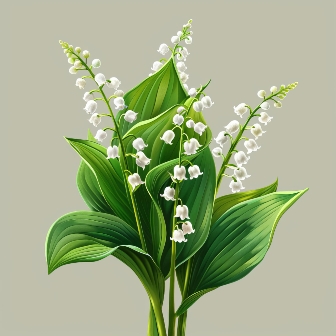
| Attribute | Details |
|---|---|
| Common Name | Lily of the Valley |
| Scientific Name | Convallaria majalis |
| Family | Asparagaceae (formerly Liliaceae) |
| Origin | Native to Europe and parts of Asia |
| Flower Color | White (occasionally pale pink) |
| Plant Type | Perennial herbaceous plant |
| Height | 15–30 cm (6–12 inches) |
| Flowering Period | Late spring to early summer |
| Sunlight Requirements | Partial shade to full shade |
| Soil Type | Moist, well-drained, humus-rich soil |
| Soil pH | Slightly acidic to neutral (pH 5.5–7.0) |
| Watering Needs | Moderate watering; prefers consistently moist soil |
| Propagation Methods | Rhizome division |
| Uses | Ornamental, cut flowers, perfumes, traditional medicine |
| Fragrance | Strong, sweet fragrance |
| Symbolism | Purity, humility, return of happiness |
| Pests/Diseases | Susceptible to aphids, slugs, fungal diseases (e.g., root rot) |
| Toxicity | Highly toxic to humans, pets, and livestock if ingested |
Hawthorn
The hawthorn tree is filled with small, fragrant blossoms that symbolize hope and joy. In ancient folklore, hawthorn trees were believed to have protective qualities, making them symbols of good fortune.
June – Rose (Rosa)
For June, the iconic Rose serves as the birth flower, representing love, passion, and beauty. Known for their layered petals and exquisite fragrance, roses have been a symbol of love across cultures for centuries.
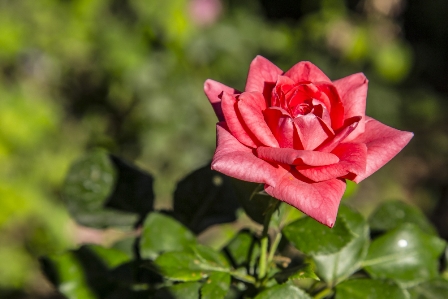
| Attribute | Details |
|---|---|
| Common Name | Rose |
| Scientific Name | Rosa |
| Family | Rosaceae |
| Origin | Native to various regions across the Northern Hemisphere |
| Flower Color | Red, pink, white, yellow, orange, purple, and various combinations |
| Plant Type | Perennial shrub or climber |
| Height | 30 cm to over 6 meters (1–20+ feet) depending on species/cultivar |
| Flowering Period | Late spring to autumn |
| Sunlight Requirements | Full sun to partial shade |
| Soil Type | Well-drained, fertile, loamy soil |
| Soil pH | Slightly acidic to neutral (pH 6.0–7.0) |
| Watering Needs | Regular watering; prefers evenly moist soil |
| Propagation Methods | Cuttings, grafting, seeds |
| Uses | Ornamental, cut flowers, perfumes, essential oils, medicinal uses |
| Fragrance | Varies by species and cultivar; many are highly fragrant |
| Symbolism | Love, beauty, passion, purity, secrecy (varies by color) |
| Pests/Diseases | Susceptible to aphids, spider mites, black spot, powdery mildew |
| Toxicity | Generally non-toxic to humans and pets |
Honeysuckle
The honeysuckle is known for its sweet fragrance and symbolizes devotion and bonds of love. Its vines that twist and cling symbolize the idea of deep attachment and lasting affection.
July – Larkspur (Delphinium)
The Larkspur, a tall, colorful flower that blooms in July, symbolizes positivity, dignity, and an open heart. With its towering spikes of blossoms, the larkspur has been linked to strong bonds of love and protection.
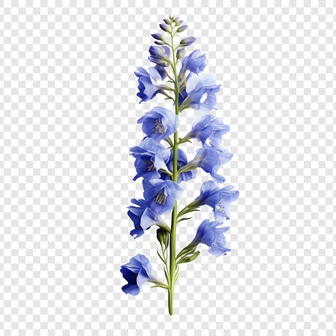
| Attribute | Details |
|---|---|
| Common Name | Larkspur |
| Scientific Name | Delphinium |
| Family | Ranunculaceae |
| Origin | Native to the Northern Hemisphere and tropical Africa |
| Flower Color | Blue, purple, pink, white |
| Plant Type | Perennial or annual herbaceous plant |
| Height | 30 cm to 2 meters (1–6 feet), depending on species |
| Flowering Period | Late spring to mid-summer |
| Sunlight Requirements | Full sun to partial shade |
| Soil Type | Well-drained, fertile, loamy soil |
| Soil pH | Slightly acidic to neutral (pH 6.0–7.0) |
| Watering Needs | Regular watering; prefers moist soil but well-drained |
| Propagation Methods | Seeds, division, or cuttings |
| Uses | Ornamental, cut flowers, cottage gardens |
| Symbolism | Open heart, passionate attachment, lightness |
| Pests/Diseases | Susceptible to aphids, slugs, powdery mildew, and crown rot |
| Toxicity | Highly toxic to humans and animals if ingested |
Water Lily
The water lily symbolizes purity, enlightenment, and peace. Floating serenely on the surface of water, this flower has been revered in various cultures, including ancient Egypt, for its spiritual connotations.
August – Gladiolus (Gladiolus)
Gladiolus, the birth flower for August, stands tall and strong, symbolizing integrity, sincerity, and strength of character. Its name comes from the Latin word “gladius,” meaning sword, and its flowers are often associated with moral fortitude and victory.
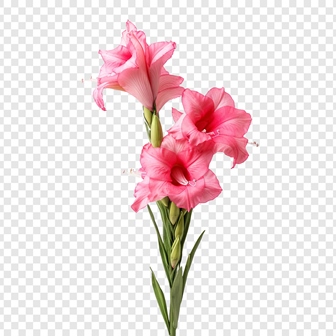
| Category | Details |
|---|---|
| Common Name | Gladiolus |
| Scientific Name | Gladiolus |
| Family | Iridaceae |
| Origin | Africa, Mediterranean, Asia |
| Flower Color | Red, pink, white, yellow, purple, orange, and various other shades |
| Plant Type | Herbaceous perennial |
| Height | 2 to 5 feet (60 cm to 150 cm) |
| Flowering Period | Summer (July to September) |
| Sunlight Requirements | Full sun |
| Soil Type | Well-drained, fertile soil |
| Soil pH | Slightly acidic to neutral (pH 6.0 to 7.0) |
| Watering Needs | Moderate; keep soil moist but not waterlogged |
| Propagation Methods | Corms (bulb-like structures) |
| Uses | Ornamental gardens, cut flowers, floral arrangements |
| Symbolism | Strength, integrity, remembrance |
| Pests/Diseases | Aphids, thrips, gray mold, root rot |
| Toxicity | Non-toxic to humans but may cause mild irritation to pets if ingested |
Poppy
The poppy is associated with remembrance, consolation, and peace. Red poppies, in particular, have strong connections to World War I, where they symbolized the bloodshed and eventual peace.
September – Aster (Aster amellus)
The Aster, September’s birth flower, is known for symbolizing wisdom, courage, and faith. With its star-like blooms, the aster has been tied to ancient myths, often representing divine love and protection.
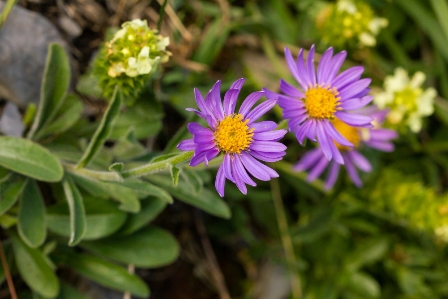
| Attribute | Details |
|---|---|
| Common Name | Aster, Italian Aster |
| Scientific Name | Aster amellus |
| Family | Asteraceae |
| Origin | Europe and Asia |
| Flower Color | Purple, Lavender, Blue |
| Plant Type | Perennial |
| Height | 30-60 cm (12-24 inches) |
| Flowering Period | Late summer to autumn |
| Sunlight Requirements | Full sun to partial shade |
| Soil Type | Well-drained, sandy, or loamy soil |
| Soil pH | Neutral to slightly alkaline (6.5-7.5) |
| Watering Needs | Moderate; prefers regular watering but can tolerate drought once established |
| Propagation Methods | Division, seeds, cuttings |
| Uses | Ornamental gardens, cut flowers, attracting pollinators |
| Symbolism | Love, patience, wisdom |
| Pests/Diseases | Powdery mildew, aphids, slugs, root rot |
| Toxicity | Non-toxic to humans and pets |
Morning Glory
The morning glory blooms early in the day, symbolizing the fleeting nature of time and the importance of appreciating life’s moments. With its short lifespan, this flower encourages us to embrace the beauty of the present.
October – Marigold (Tagetes)
October’s birth flower, the Marigold, symbolizes warmth, creativity, and passion. Known for their vibrant orange and yellow petals, marigolds were often used in rituals to represent the sun’s power and light.

| Attribute | Details |
|---|---|
| Common Name | Marigold |
| Scientific Name | Tagetes spp. |
| Family | Asteraceae |
| Origin | Native to North and South America |
| Flower Color | Yellow, Orange, Red, Gold |
| Plant Type | Annual (mostly), some species are perennial |
| Height | 15-100 cm (6-39 inches), depending on species and variety |
| Flowering Period | Summer to autumn |
| Sunlight Requirements | Full sun |
| Soil Type | Well-drained, fertile soil |
| Soil pH | Neutral to slightly acidic (6.0-7.0) |
| Watering Needs | Moderate; allow soil to dry between waterings |
| Propagation Methods | Seeds, division |
| Uses | Ornamental gardens, pest repellent, medicinal, culinary |
| Symbolism | Passion, creativity, remembrance, grief |
| Pests/Diseases | Aphids, spider mites, root rot, powdery mildew |
| Toxicity | Generally non-toxic, but can cause skin irritation in sensitive individuals |
Cosmos
The cosmos flower represents harmony, balance, and order. Its perfectly symmetrical petals make it a symbol of beauty and tranquility, encouraging us to seek balance in our lives.
November – Chrysanthemum (Chrysanthemum)
The Chrysanthemum, a symbol of friendship, happiness, and longevity, is the birth flower for November. With a variety of colors and shapes, chrysanthemums represent joy and optimism, making them a popular choice for celebrations.
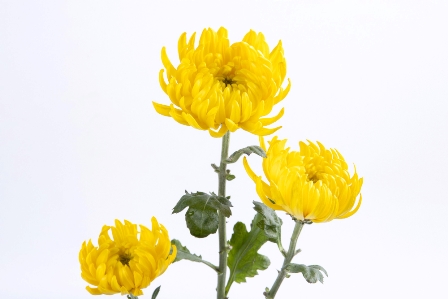
| Attribute | Details |
|---|---|
| Common Name | Chrysanthemum, Mum |
| Scientific Name | Chrysanthemum spp. |
| Family | Asteraceae |
| Origin | Asia, particularly China and Japan |
| Flower Color | White, Yellow, Pink, Red, Orange, Purple |
| Plant Type | Perennial (often grown as annuals) |
| Height | 30-100 cm (12-39 inches), depending on variety |
| Flowering Period | Late summer to autumn |
| Sunlight Requirements | Full sun to partial shade |
| Soil Type | Well-drained, fertile soil |
| Soil pH | Neutral to slightly acidic (6.0-7.0) |
| Watering Needs | Moderate; keep soil evenly moist but not waterlogged |
| Propagation Methods | Cuttings, division, seeds |
| Uses | Ornamental gardens, cut flowers, traditional medicine |
| Symbolism | Longevity, joy, loyalty, and grief in different cultures |
| Pests/Diseases | Aphids, spider mites, leaf miners, powdery mildew, root rot |
| Toxicity | Toxic to cats, dogs, and horses if ingested |
Peony
The peony is a symbol of prosperity, romance, and honor, often associated with good fortune and happy marriages. Known for its large, lush blooms, the peony has a rich history in both Eastern and Western cultures. In Chinese culture, it is regarded as the “King of Flowers” and symbolizes wealth and nobility. In the Victorian era, peonies were often used to express romantic feelings and compassion. These fragrant flowers, with their soft petals in shades of pink, white, and red, are also linked to healing and protection. Brides often choose peonies for wedding bouquets as they are believed to bring a lifetime of happiness and love, complemented by beautifully designed print invitations that set the tone for their special day. Beyond their beauty, peonies hold a timeless elegance, making them a beloved flower for gardens and special occasions alike.
December – Holly (Ilex aquifolium)
The birth flower for December, Holly, symbolizes protection, joy, and peace. Traditionally used in holiday decorations, holly’s evergreen nature represents enduring life and resilience during the coldest months.

| Attribute | Details |
|---|---|
| Common Name | Holly, English Holly |
| Scientific Name | Ilex aquifolium |
| Family | Aquifoliaceae |
| Origin | Europe, North Africa, Western Asia |
| Flower Color | White or greenish-white |
| Plant Type | Evergreen shrub or tree |
| Height | 10-25 meters (33-82 feet), depending on conditions |
| Flowering Period | Late spring to early summer |
| Sunlight Requirements | Full sun to partial shade |
| Soil Type | Well-drained, loamy or clay soil |
| Soil pH | Slightly acidic to neutral (6.0-7.0) |
| Watering Needs | Moderate; prefers moist soil but is drought-tolerant once established |
| Propagation Methods | Seeds, cuttings |
| Uses | Ornamental plant, Christmas decorations, hedges, traditional medicine |
| Symbolism | Protection, eternal life, peace, goodwill |
| Pests/Diseases | Leaf miners, scale insects, aphids, holly leaf blight |
| Toxicity | Berries are toxic to humans and pets if ingested |
Narcissus
The narcissus flower, often associated with the myth of Narcissus, symbolizes self-esteem, rebirth, and renewal. Despite its mythological connotations, this flower brings a sense of fresh beginnings to the cold month of December.
Conclusion
Birth flowers offer a unique and meaningful way to celebrate each month. These flowers, with their rich symbolism and historical significance, represent the qualities and characteristics associated with those born during that time. Whether it’s the love and admiration of carnations in January or the joy and protection of holly in December, birth flowers carry deep emotional connections that make them special gifts. They beautifully reflect the essence of each month and the individuals born within it.






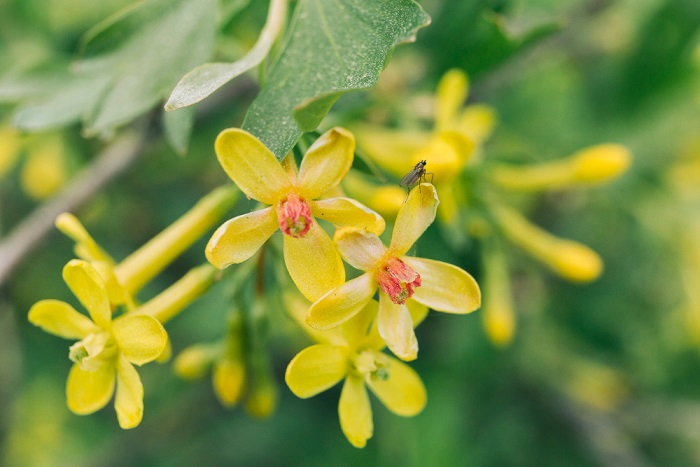

Find Us on Socials